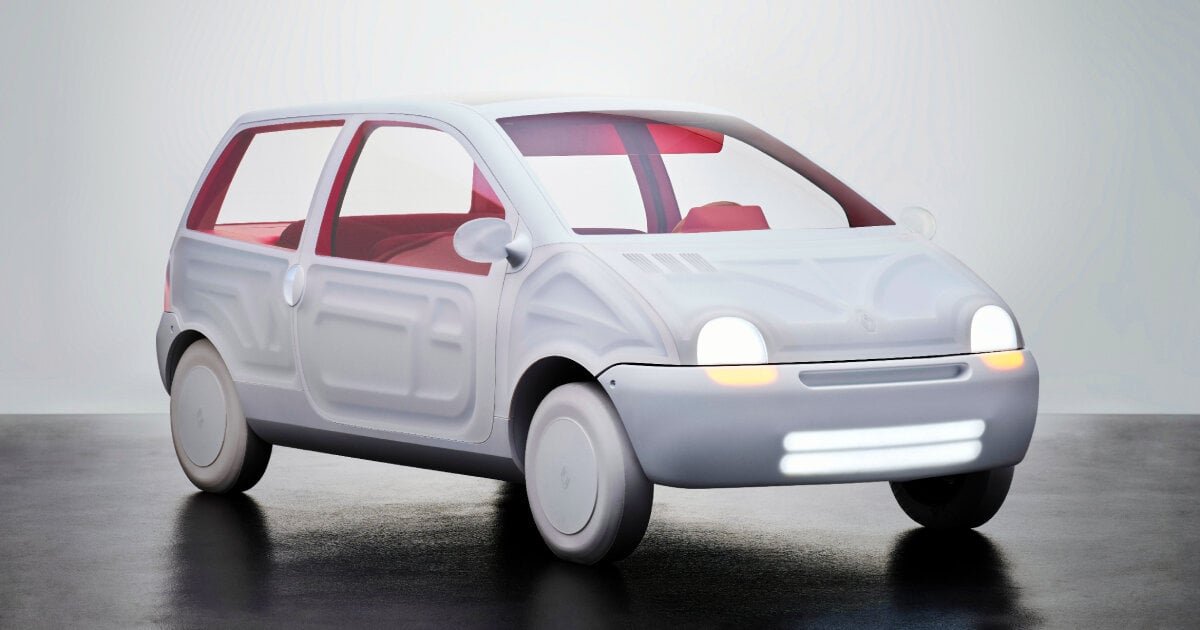interview: sabine marcelis reimagines renault’s iconic 1993 twingo as translucent electric car
Sabine Marcelis reinvents 1993 Renault Twingo
Sabine Marcelis and Renault take the electric city car Twingo for a velvety spin, arranged and imagined from a designer’s perspective. Renault has commissioned the designer to revisit the design of the electric minicar Twingo and celebrate its 30th anniversary after its launch in 1993. Her work follows in the footsteps of Mathieu Lehanneur, who honored the 60 years anniversary of the Renault 4 with Suite N°4, and Pierre Gonalons for the 50 years of the Renault 5 with the R5 Diamant.
Sabine Marcelis’ works are synonymous with elegant forms, pure materials, and the use of light, three themes that grace her interpretation of Renault’s Twingo. From the onset, the white car frame already alludes to the sensuous interior that seems to peek through the windows. In an interview with designboom, Sabine Marcelis reveals that she has never worked on a car before, making her collaboration with Renault for Twingo a first in her design arsenal. She deems it a complex task, one that she is more than willing to take on and experiment with.
‘Restrictions can often really push creativity as you need to really dig deep into details that can make all the difference. It was very insightful to rethink the Twingo iconic details in a new light. I wanted to preserve the Twingo’s iconic elements but present them in a new unexpected way through the use of materiality,’ she tells designboom.
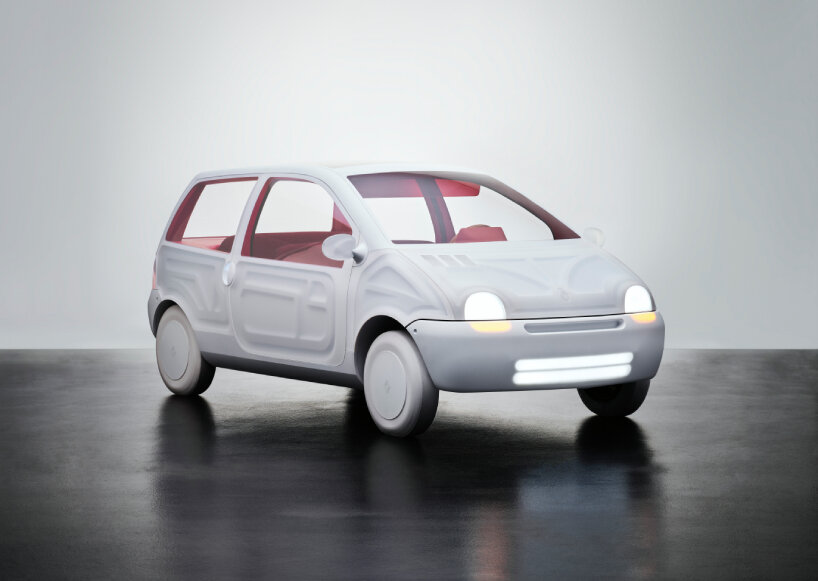
images courtesy of Renault and Sabine Marcelis | photos by Carl Kleiner (unless stated)
TRANSLUCENT ELECTRIC CAR WITH BURGUNDY STEERING WHEEL
Sabine Marcelis and Renault first looked into the features of Twingo that could leave lasting impressions on its viewers from the get-go: the quaint shape, the distinctive headlights, and the roomy interior albeit its modest size.
Shifting colors and materials took place until Sabine Marcelis and Renault came up with a Twingo that stays faithful to its original design while infused with the designer’s reverence for ambient, seductive, and rich color and design elements. Through Renault Twingo, Sabine Marcelis unravels an artistic freedom that is dear to her design philosophy, all the while treading the foreign territory of the automobile industry.
In an interview with designboom, Sabine Marcelis and François Farion, the Design and Innovation Director for Renault, sit down to ponder and look back to the birth of their Renault Twingo collaboration, the visual features unique to the electric city car including the disk-shaped transparent steering wheel, how the use of translucent materials came about, and the unfolding of the commemoration of the Twingo that brought all of them together.
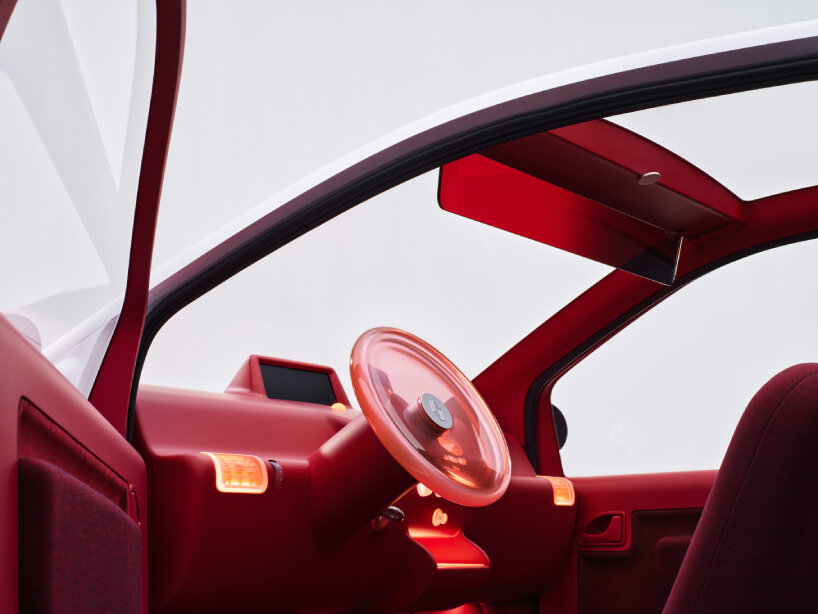
the choice of burgundy represents an elevated use of the original Twingo red
Interview WITH SABINE MARCELIS AND RENAULT’S FRANÇOIS FARION
designboom (DB): Can you tell us how your collaboration with Renault came about? Are you generally interested in automotive design? What was your design approach to reinterpreting Twingo?
Sabine Marcelis (SM): I was invited by Renault to design a Twingo to celebrate its 30th anniversary. I love working on projects that challenge myself and my team, and although I’ve never worked on a car before, it’s a category where design is highly present and serves many different functions. Designing a car is a complex task, and there are many restrictions to consider.
However, these restrictions often push creativity as you need to delve deep into details that can make all the difference. It was very insightful to reimagine the iconic details of the Twingo in a new light. I wanted to preserve the Twingo’s iconic elements while presenting them in a new and unexpected way through the use of materiality.
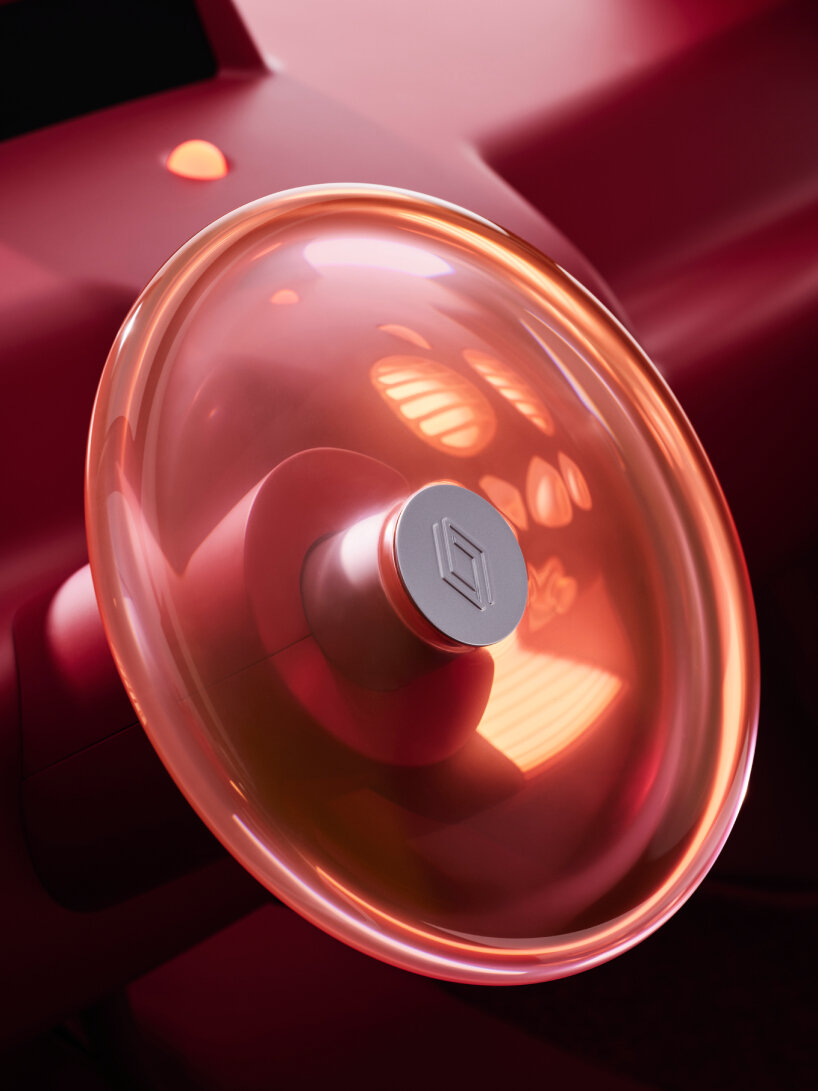
a disk-shaped transparent steering wheel is reminiscent of toy cars
DB: What are the design elements that define your version of the Renault Twingo? Could you highlight some of its standout features?
SM: Some elements that truly define the original Twingo are the ‘frog eye’ headlights, the interior elements like the vents and buttons, the silhouette, and the rear lights. My challenge was to elevate them without losing their unique identity, bringing all elements into a more luxurious realm activated by light and materiality.
I stripped elements back to their essence and pushed the theme of mono-materiality even further by transforming some elements into mono-elements, such as the sunshade and front seats, which have become singular elements.
The body and windows also form a single seamless element without any breaks, only a transition in opacity. One of my favorite features is the Key, which is the object that activates the entire car. We designed it in a translucent torus shape, a signature form I often work with.
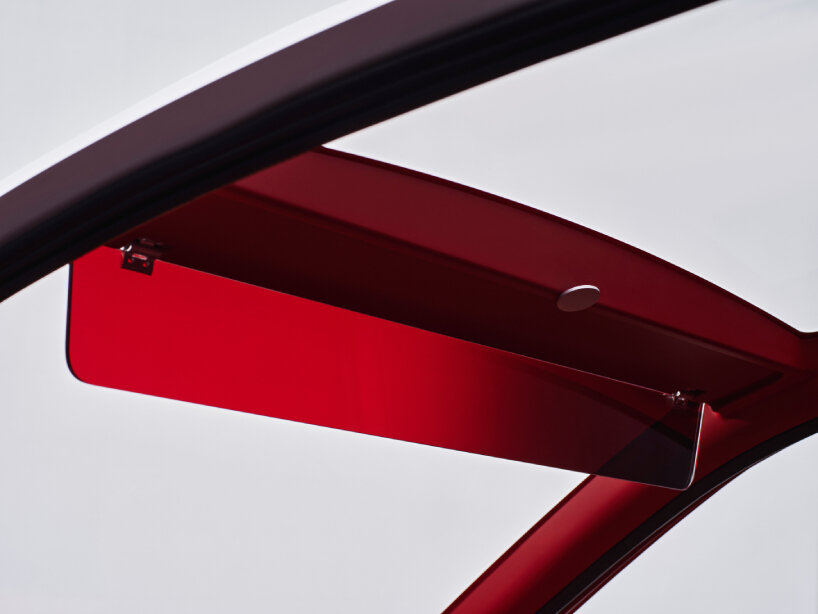
‘light allows me to activate static materials and create dynamic designs,’ Sabine Marcelis tells designboom
DB: What led to the idea of utilizing translucent materials in the car’s design? Why was it important to create light interactions through these materials?
SM: It’s a recurring theme in my work to play with light as it allows me to activate static materials and create dynamic designs. I wanted to bring that aspect to this project as well. While staying true to the lines and form language of the original Twingo, I aimed to present it in a completely different way simply by changing the materiality and allowing it to interact with external light and integrated light sources.
This approach also encourages exploration of the car from all sides as the perception of depth changes when viewed from different angles. By altering the transparency of certain elements, you can accentuate and reveal new aspects of its shape. I love that duality – it’s a combination of preserving the original while interpreting what it could become.

